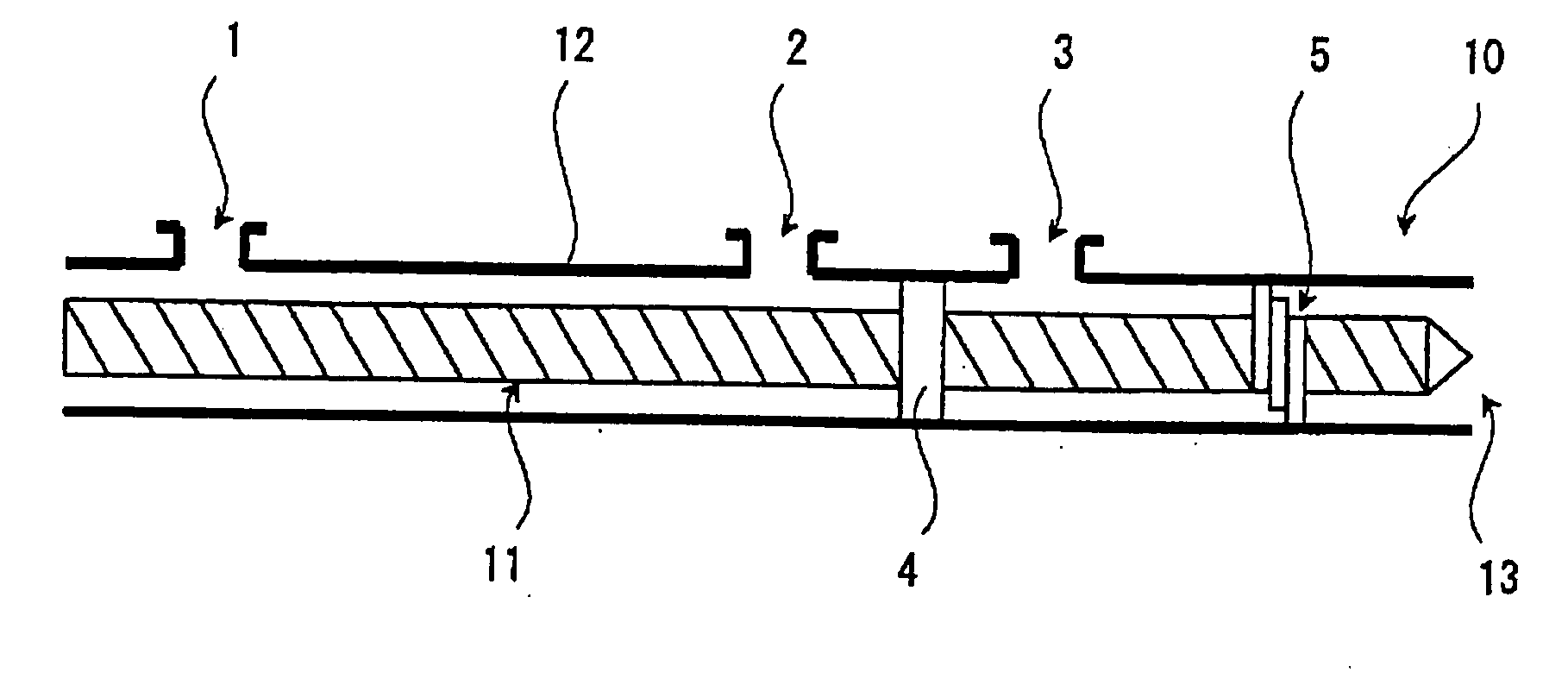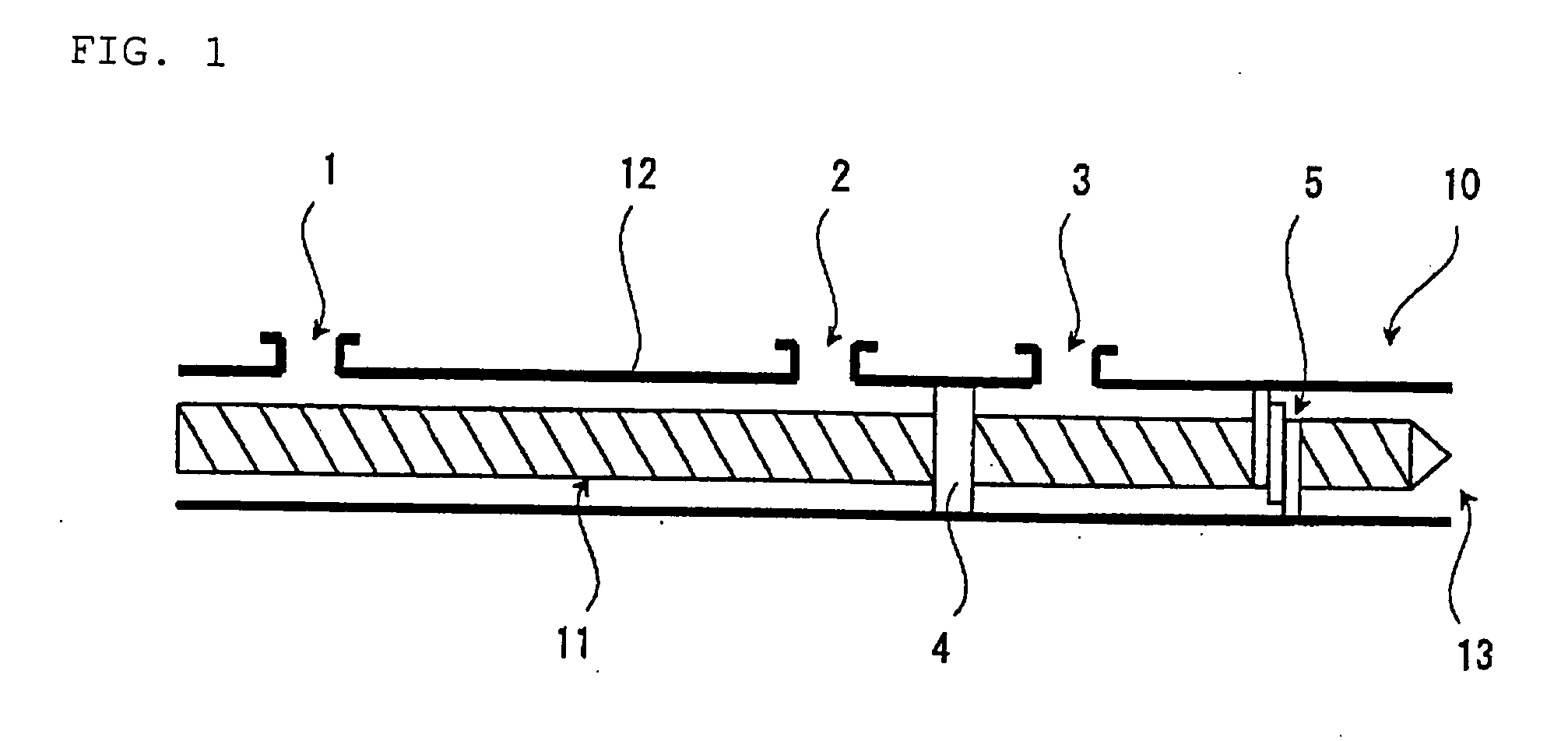Process for Producing Cycloolefin Resin Composition
a technology of cycloolefin and resin composition, which is applied in the field of process for producing cycloolefin resin composition, can solve the problems of insufficient kneading of resin material and additive, low water absorption coefficient of cycloolefin resin, and inability to maintain favorable optical characteristics, etc., to achieve less deterioration of resin, good hue and transparency, and reduce additive loss
- Summary
- Abstract
- Description
- Claims
- Application Information
AI Technical Summary
Benefits of technology
Problems solved by technology
Method used
Image
Examples
production example 1
Resin (A) (Ethylene-Cycloolefin Copolymer)
[0122] A flash dried cycloolefin random copolymer was obtained in the similar way described in Examples of Japanese Patent Laid-Open Publication No. H3-220211. That is, the cycloolefin random copolymer was obtained by the following method.
[0123] VO(OC2H5)Cl2 was diluted with cyclohexane to obtain a vanadium catalyst having a vanadium concentration of 6.7 mmol / liter-cyclohexane.
[0124] Ethylaluminum sesquichloride (Al(C2H5)1.5Cl1.5) was diluted with cyclohexane to obtain an organic aluminum compound catalyst having an aluminum concentration of 107 mmol / liter-cyclohexane.
[0125] A cycloolefin random copolymer was produced by continuously copolymerizing ethylene with tetracyclo[4,4,0,12,5,17,10]-3-dodecene (hereinafter simply referred to as “tetracyclododecene”) as a cycloolefin using an agitation type polymerization reactor (having an inside diameter of 500 mm and a reaction volume of 100 L) . In carrying out this copolymerization reaction, ...
production example 2
Resin B (Ethylene-Cycloolefin Copolymer Hydrogenated Product)
[0134] A solution was prepared by dissolving a resin obtained in Production Example 1 in cyclohexane at a concentration of 15% by weight. To 300 g of the solution was added 1.3 g of a Raney nickel catalyst (the nickel content: 40% by weight) and the resulting solution was reacted at 100° C. under a hydrogen partial pressure of 3 MPa for 4 hours. After filtering off the catalyst, the reaction solution was added into acetone to precipitate a polymer, followed by filtering and drying to obtain a resin B. The hydrogenation rate of the resin B was almost 100% and the intrinsic viscosity was 0.5 dl / g and a TMA of 143° C.
production example 3
Resin C (Cycloolefin Ring-Opening Polymer Hydrogenated Product)
[0135] To a nitrogen-replaced 200 L reactor having a heat exchange system using a water medium were added 1,000 parts of 8-ethyltetracyclo[4.4.0.12,5.17,10]-dodeca-3-ene (hereinafter abbreviated as “ETCD”) and 24,000 parts of cyclohexane, and to the mixed solution was added 68 parts of tri-i-butylaluminum [iBu3Al] as a polymerization catalyst, 26 parts of isobutyl alcohol and 14 parts of acetone as a reaction regulator and 188 parts of 1-hexene diluted with 2,000 parts of cyclohexane as a molecular weight adjusting agent. The error in the addition of 1-hexene was 1%. After the temperature of the reaction solution at this stage was set at 40° C., the temperature of the water medium was set at 25° C. and a mixed solution of 18 parts of tungsten hexachloride and 15,200 parts of cyclohexane was added. The increase of the reaction heat from the start of the reaction was confirmed to be 4.3° C. and the solution was stirred at...
PUM
| Property | Measurement | Unit |
|---|---|---|
| Electric dipole moment | aaaaa | aaaaa |
| Electric dipole moment | aaaaa | aaaaa |
| Electric dipole moment | aaaaa | aaaaa |
Abstract
Description
Claims
Application Information
 Login to View More
Login to View More - R&D
- Intellectual Property
- Life Sciences
- Materials
- Tech Scout
- Unparalleled Data Quality
- Higher Quality Content
- 60% Fewer Hallucinations
Browse by: Latest US Patents, China's latest patents, Technical Efficacy Thesaurus, Application Domain, Technology Topic, Popular Technical Reports.
© 2025 PatSnap. All rights reserved.Legal|Privacy policy|Modern Slavery Act Transparency Statement|Sitemap|About US| Contact US: help@patsnap.com



